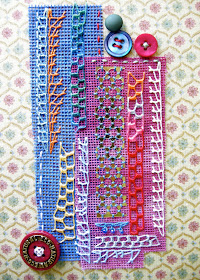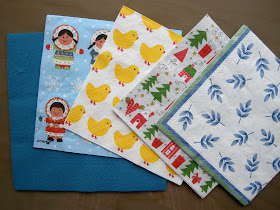Work
In
Progress
Wednesday
Regular readers know by now that WIPW for me means a report on my Kafferepet quilt.
We've come to the last kind of items on the quilt - flowers.
For the well dressed coffee party table there must be flowers. Winters in Sweden are long, dark and cold so almost every home has a selection of potted houseplants, many of them flowering. A pot with hyacinths, African violets or orchids may decorate the table.
However, cut flowers are more common, especially in the warmer seasons. They may be shop bought, or picked in the garden. Usually they are beautifully arranged in a vase, but they can simply be strewn on the table as well.
One of the most popular summer flowers is the Ox Eyed Daisy, and it is even featured on the
Swedish National costume.
I come from a long line of florists, and gardeners, who cultivated new varieties of fruit and flowers. Having flowers around the house is second nature to me, and for this quilt I tried to follow in my ancestors' footsteps and bred a new 'Heart Petalled Daisy', i.e. I appliquéd a couple of fantasy flowers, ha, ha!
Flowers on the table can of course also be the edible variety. There might be crystallised violets on a cake. How about some rose jelly as a cake filling, lavender scones, lemon scented pelargonium leaves in the muffin batter, camomile tea or small frozen flowers in the ice cubes...
-.-.-.-.-.
Japan is famous for its Ikebana. You can see these artistically arranged flowers in the alcove of a traditional living room,
in restaurants and even railway stations or post offices.
However, these arrangements are not placed on a dining table. Even other bouquets of flowers are displayed on side tables, in the window or at the Buddhist altar (in this last case they are a special selection of flowers), but NOT on the table. Now here comes a contradiction: That doesn't mean that there are no flowers on the table! There are, but they are for
consumption; cherry blossoms cured in salt and used for tea, chrysanthemum petals pickled in vinegar and honey, rice steamed in bamboo leaves... Also like kitchen wizards in many other countries, a Japanese chef might carve vegetables to
look like flowers, e.g a slice of carrot turned into a plum blossom.
Oh, and of course, in spring the chops sticks might rest on a small twig with cherry blossoms and in autumn there might be a red maple leaf in the bamboo basket of deep fried vegetables - not for consumption, and not in the common home, you need to go to a 'fancy' restaurant to see this.
-.-.-.-.-.
More progress on the border.
I used Sharon's CQ Stencils for the swirly TAST stems. #56 Sailor Stitch on the left and #12 Barred and Alternating Barred Chain Stitch on the right
Some stitch treatment on flower and leaves. There will be beads added later.
For more WIPW reports, visit
Pintangle.
 You can see how uneven the first black stitches (on the left) are. The second row is worked in a 'strange' thread. It is beautifully variegated but extremely waxy. It was a gift, thrown in when I bought something else.
You can see how uneven the first black stitches (on the left) are. The second row is worked in a 'strange' thread. It is beautifully variegated but extremely waxy. It was a gift, thrown in when I bought something else.











































